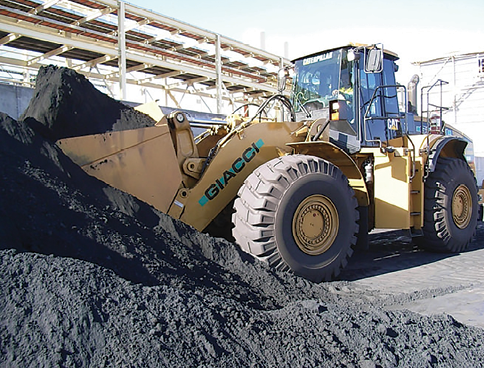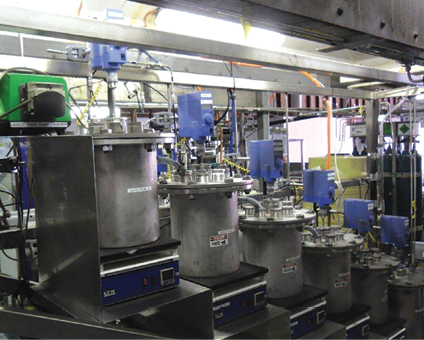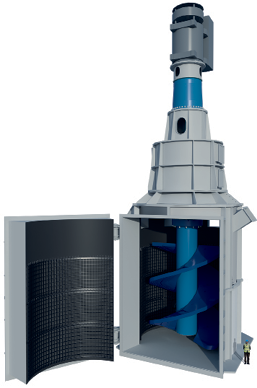Alan Taylor, a well-known metallurgical consultant and managing director of ALTA Metallurgical Services, recently commented in his new blog MetBytes about how the industry is looking at ways to handle the problem of impurities in copper concentrates. He wrote: “Some new players have joined the list of hydromet processes for copper sulphide concentrates. A key driving force is increasing industry concerns in the transporting and smelting of concentrates with high impurity levels, especially arsenic. This has led some to focus on removal of impurities rather than total hydromet processing.” The following is his summary of new developments in this area of hydrometallurgy.

Lower-cost, more efficient methods for removing impurities from copper concentrates could enable hydrometallurgical processes to make inroads against the dominance of traditional smelting.
Impurity Removal Processes
NONOX Process–The process utilizes a combination of copper metathesis and hydrothermal leach mechanisms to remove or reduce impurities from copper sulphide concentrates while significantly upgrading the copper content. Chalcopyrite and bornite minerals react with copper sulphate, which displaces iron and produces chalcocite/digenite. Covellite also reacts to form chalcocite/digenite. The result is a copper in concentrate of 50%-60% together with the gold. The iron passes into a solution accompanied by other impurities such as cobalt, nickel, zinc, lead, bismuth, thorium and its daughter products, and uranium and its daughter products. The process can be carried out in sulphate or sulphate-chloride media. The latter is reported to be more suitable for the mobilization of impurities and is subject to patent application.
The upgrading process is carried out in an autoclave in a non-oxidative (NONOX) environment) at 180°–220°C. The discharge slurry is filtered to separate upgraded concentrate from the spent leach solution, which is neutralized for disposal. Consideration could be given to recovering potentially valuable impurities such as uranium. Copper sulphate solution is typically generated by treating a portion of the upgraded concentrate in a pressure-ox autoclave. The chalcocite/digenite is converted to copper sulphate and the gold reports to the residue. The discharge slurry is fed to the NONOX autoclave. Alternatively, copper sulphate could be produced by processing oxide ore or tailings by leach-SX-EW.
Oz Minerals is conducting a PFS for a NONOX type facility as part of its Carrapateena project in South Australia with a view to establishing a commercial operation in 2019. Successful pilot and demonstration plant campaigns and smelter trial tests have been carried out. Potential benefits include significant freight savings, long-term protection from penalties and competitive market advantage.
Toowong Process–The Toowong Process is being developed by Core Resources, Brisbane, Australia. It is a patented alkaline leach process for the removal of arsenic, antimony and other penalty elements from copper, lead and nickel sulphide concentrates, and antimony from gold concentrates. The flowsheet consists of an atmospheric tank caustic leach followed by filtration and washing of the cleaned concentrate. The filtrate is treated in a pressure oxidation autoclave and any gold and antimony is precipitated, after which arsenic is precipitated from the solution in a disposable form. The final solution is concentrated by evaporation and recycled to leach.
The process was successfully piloted in small and larger facilities in 2011 and 2012, achieving >90% arsenic removal from concentrates containing 1.1% As. Claimed advantages vs. existing alkaline leaching technology include nil to low sodium sulphide addition, low polysulphides, low sulphate bleed, and low gold dissolution from the concentrate. Further development work and engineering studies are envisaged progressing toward commercialization assisted by a licensed early adopter of the process with a suitable project.
Total Leaching Processes
ROL Process–The Rapid Oxidative Leach (ROL) Process is being developed by FL-
Smidth. It utilizes a series of stirred media reactors (SMRt) in tandem with conventional agitated leach tanks with ferric sulphate lixiviant and oxygen sparging at 80°C. Copper recovery of 97%–99% is achieved in about six hours for chalcopyrite concentrates and 12 hours for enargite. The interstage placement of the SMRt reactors provides the advantages of mechano-chemical activation and surface cleaning with only a minimal addition to base-line processing costs. Leaching is followed by solid/liquid separation and SX-EW for copper recovery. The patented process is said to cost-effectively overcome the slow leach kinetics and poor copper recoveries commonly experienced with ferric sulphate leaching due to surface passivation issues. Tests indicate about 68% of the sulphur reports as elemental to the residue with the remainder as sulphate. Gold reports to the residue.
It was announced in February that a pilot plant facility is being built at FLSmidth’s Minerals division headquarters located in Salt Lake City, Utah, USA. The company also signed a joint research and development agreement with BASF to expedite commercialization. BASF will focus on innovative SX extractants with high degradation resistance and increased copper selectivity.
GlyLeach Process–The GlyLeach Process, under development at Curtin University, Australia, is an alkaline-based process utilizing glycine—a non-toxic, non-corrosive, environmentally benign amino acid—for leaching copper, gold and silver from primary copper sulphide concentrates as well as secondary sulphide, mixed and oxide ores. The flowsheet typically includes ultrafine grinding, pre-oxidation with oxygen, atmospheric tank leaching at <100°C, and solid liquid separation. Copper is recovered from the solution by SX/EW (or sulphide precipitation), followed by pH adjustment and precipitation of silicates/carbonates with lime, then gold recovery in carbon columns before recycling to leach.
Other than losses in leach residues, the glycine is recovered and recycled for leaching. Caustic makeup is added to pre-oxidation and glycine makeup to leach. Tests indicate that more than 90% copper recovery can be achieved in 17 hours. Iron dissolution is insignificant in the pregnant leach solution. Iron in pyrite is unaffected, whereas iron in chalcopyrite is precipitated as a readily filterable iron hydroxide. No elemental sulphur is formed. The process is particularly suitable for ores containing acid-consuming gangue, concentrates with high arsenic or halide contents and for copper-gold ores with significant sulfide mineralization. Further optimization work and improvement work is planned, leading to a pilot scale program. An exclusive license has been signed with Mining and Process Solutions, Perth, Australia.
In conclusion, Taylor said, “While hydromet has yet to make a significant inroad into the dominance of smelting, the impurities issue may well open the door wider. Also, the lower cost and reduced risk of impurity removal processes may provide added incentive.”
MetBytes (www.altamet.com.au/metbytes) are metallurgical commentary and insights written by Alan Taylor, who has 40-plus years of experience in the metallurgical, mineral and chemical processing industries. He has worked in metallurgical consulting, project development, engineering/construction, plant operations, plant start-up and technology development. Projects and studies have involved copper, gold/
silver, nickel/cobalt, uranium, base metals, phosphates and alumina.

According to Core Resources, the Toowong Process achieves more than 90% arsenic and antimony removal from many copper, lead and nickel concentrates. Process testing has included a pilot plant operation for Tampakan concentrate, successfully reducing arsenic content from 1.1% to 0.1%.
ABB Announces RMD Portfolio Restructure
ABB said it has reorganized its ring-geared mill drive (RMD) portfolio to make it easier for customers to identify and select the most suitable technology for their needs.
According to the Switzerland-based power and automation technology supplier, an enhanced product range will clearly define available solution options within ABB’s portfolio, which includes products and systems that fit specific technical requirements, process needs and budget constraints. Customers will be able to easily differentiate ABB’s RMD offerings through the following categories:
• RMDfsd (fixed speed drive): A solution for projects with constant ore grade throughout the life cycle of the mine or for small ball mills that do not require variable speed.
• RMDvsd (variable speed drive): A variable speed solution, including soft-starting and optimum torque control for the entire speed range. Suitable for any kind of grinding mill.
• RMDplus: A fully variable speed solution, with mill application features providing the highest operational flexibility and optimizing maintenance actions.
• SmartMill: Combines all features from RMDplus with advanced process control technology to increase productivity and energy efficiency.
“To better meet our customers’ needs, we have organized this solution family to make it easier to understand, choose and implement the RMD option that will deliver the best results for a specific process and plant,” said Marcelo Perrucci, global product manager within ABB’s process industries business unit. “ABB is committed to improving all aspects of the customer experience; this more transparent overview of our RMD portfolio reduces complexity in the product selection process while providing the solutions and services to help them to succeed in their operations.”

Since acquiring the license to market TowerMills from Kubota Corp. in 1999, Eirich has expanded the product line to include models rated up to 1,500 hp.
German Firms to Collaborate on TowerMill Development
Thyssenkrupp Industrial Solutions and Maschinenfabrik Gustav Eirich announced they have agreed to cooperate on the further development of the Eirich TowerMill, an agitated media mill for wet grinding of ores and minerals that is claimed to be highly energy-efficient.
The aim of the partnership, said the two companies in a joint statement, is to build high-capacity, powerful TowerMills capable of delivering high throughputs even for fine and superfine grinding.
Uwe Schuh, head of Grinding Technology at Industrial Solutions, said, “We need to keep pace with the complex requirements of our mining industry customers so that we can continue to offer them high-efficiency ore processing solutions in the future. That’s why we are combining the expertise of Maschinenfabrik Gustav Eirich as the patent holder with our long-standing experience in the development, construction, logistics, installation and service of such large-scale machines.”
Mineral deposits around the world generally exhibit steadily decreasing ore grades combined with increasingly fine- grained ore bodies. The partnership, said thyssenkrupp and Eirich, is in response to the rising demand for grinding equipment capable of achieving a high degree of mineral liberation at increasingly higher throughput rates.
Stephan Eirich, managing director of Maschinenfabrik Gustav Eirich, said, “We have always developed and improved our mills. Utilizing the significant plant engineering experience of thyssenkrupp will now enable us to expand our portfolio to include large machines with significantly higher throughputs to meet changing market demands.”
Headquartered in Hardheim, Germany, Eirich has core expertise in processes and techniques used for the preparation of free-flowing materials, slurry and sludge. The family-managed company was founded in 1863 and currently has 12 locations on five continents.
Eirich acquired the license to market TowerMills from the Japanese Kubota Corp. in 1999. Today, the company supplies TowerMills of various sizes up to a power rating of 1,500 hp. Worldwide, more than 40 mills with a combined power rating of 26 MW have been installed. The expanded product line, according to the companies, will include units rated up to 6,000 hp.
Weir’s Cavex Cylone Brand Reaches 20-year Milestone
Weir Minerals recently celebrated the 20-year anniversary of an iconic brand—the Cavex hydrocyclone. According to the company, a team of engineers at Warman International in Australia began a project in 1996 to develop the “next big thing” in hydrocyclones. What they came up with was a unit with unique inlet geometry that eliminated sharp angles from the feed chamber, allowing slurry to move through the hydrocyclone smoothly—thus reducing wear while increasing efficiency. These new-generation hydrocyclones delivered up to three times the wear life of the old technology.
The streamlined feed chamber is still in use. When Weir Group acquired Warman International in 1999, it came with a myriad of improvements and modifications that Weir said were designed to ensure Cavex hydrocyclones continued to provide excellent wear life and maximum productivity.
In 2010, Weir Group acquired Linatex, which brought with it a range of highly specialized dewatering hydrocyclones and rubber products for lining. This was significant for Cavex hydrocyclones because it enhanced the portfolio and improved hydrocyclone wear rates.
Last year, Weir Minerals introduced the Cavex 700CVX hydrocyclone, which it said is designed to achieve up to 50% higher throughput capacity than other competitor cyclones in the 26-in.-diameter range due to its larger inlet and vortex finder configuration.
Weir Minerals said it also is set to redefine hydrocyclone efficiency again with the development of the new Synertrex monitoring system, which allows users to obtain operational data in real time to ensure optimum performance and efficiency of their mill circuit.
According to Weir, today there are more than 26,000 Cavex hydrocyclones operating throughout the globe, making up more than a quarter of the global market share.
Nanotech-based Ion Exchange Resin Beads Bring Benefits
6th Wave Innovations Corp., Salt Lake City, Utah, USA, has introduced its IXOS nanotechnology bead for gold recovery, asserting that this molecularly imprinted polymer (MIP) ion exchange resin could increase gold mining profits by an estimated $100 per ounce due to lower processing costs and additional gold recovered in direct comparison to activated carbon.
According to the company, each IXOS bead is imprinted at the molecular level to attract gold and ignore other elements. The IXOS resin is claimed to offer long life (>50 loading/unloading cycles), high capacity (~30g/kg) and selectivity for gold (>95%); while capacity and selectivity don’t degrade with successive cycles.
The company said the elution process with IXOS is simple, straightforward and inexpensive when compared with activated carbon. The beads require no activation step for re-use. The resin is supplied ready-to-use, with a range of particle sizes available to accommodate heap leach and resin-in-leach/pulp circuits.
6th Wave said IXOS has outperformed activated carbon and conventional ion-exchange resins in laboratory and field trials conducted over the past three years in partnership with gold mining companies under a wide variety of conditions, including high grade, low grade, and refractory ores. In the trials, IXOS also demonstrated a variety of advantages over activated carbon, including capacity, selectivity, elution time and temperature, adsorption efficiency, durability, and re-use.
These advantages, said the company, directly translate to lower costs and more gold recovered. Additional claimed benefits include the need for fewer chemicals, reduced waste, no toxic emissions, and reduced power usage.







